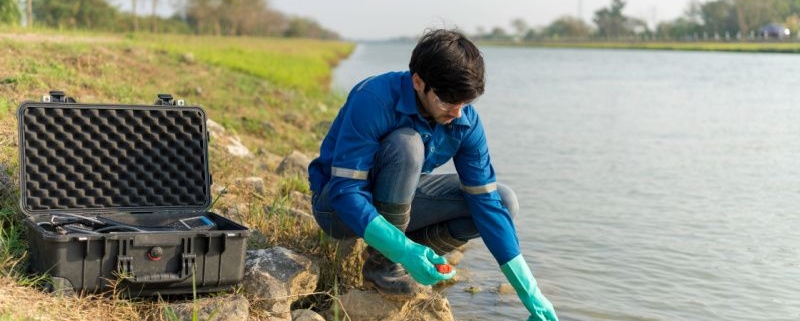Water Pollution Sensors
Water Pollution as a problem
The result of water pollution can be catastrophic, depending on the concentrations, the nature of chemicals and the location of the pollution. Water companies in Britain have struggled with raw sewage releases that have led to the poor quality of rivers and beaches. A large number of UK rivers pose a serious risk to human health and only 14% of rivers in England meet good ecological status.
With many of the UK’s waterways being polluted, continuous monitoring and measuring of water quality is more important than ever. Meteor Communications is a specialist provider of low power remote cameras and complete water quality monitoring services.
What are water pollution sensors?
Water pollution sensors are devices that measure the quality of water and detect the presence of pollutants. They are an essential tool for understanding and protecting our water resources and ensuring that our waters are safe. Water pollution sensors can be used to measure a variety of parameters, including the pH of the water, conductivity, dissolved oxygen, turbidity, total suspended solids and more.
They are valuable tools for understanding and protecting water resources and ensuring that our waters are healthy and safe environments.
Water Quality as a Service (WQaaS)
WQaaS is a service established by Meteor Communications that refers to the delivery of water quality data and insights on a subscription-based model. WQaaS providers collect, analyse, and interpret water quality data from a variety of sources, such as sensors, satellites, and historical records. They then provide this data to customers in a user-friendly format, along with actionable insights that can be used to improve water quality.
WQaaS can help to lower water pollution levels and improve water quality in a number of ways:
- Real-time monitoring of water quality parameters, such as temperature, pH, conductivity, dissolved oxygen, and nutrients. This real-time data can be used to identify and respond to pollution events quickly.
- Predictive modelling to forecast water quality trends. This information can be used to develop proactive strategies to prevent pollution.
- Data-driven decision making about water management. For example, WQaaS data can be used to optimise wastewater treatment processes and reduce pollution from agricultural run-off.
What is a Sonde?
A sonde, also known as a water quality sonde or water quality probe, is an instrument that is used to continuously measure and monitor various parameters relating to water quality. These parameters can include pH, dissolved oxygen (DO), conductivity, turbidity, salinity, temperature, and the concentration of various pollutants such as heavy metals, nutrients, and organic matter.
Multi-parameter sondes provide a packaged unit of Point sensors and measure multiple parameters, such as pH and DO simultaneously. Multi parameter sondes provide a cost effective packaged unit of sensors and offer the advantage of providing a more comprehensive assessment of water quality.
Sonde systems are an essential tool for protecting water quality and ensuring that our water resources are safe for human use and for the environment. They provide valuable data that can be used to identify sources of pollution, track trends in water quality, and monitor the effectiveness of pollution control measures
Water Pollution Sensor Maintenance
It’s important to note that all sondes will require regular maintenance as the environments they are put in are often open water and the sensors are subject to water borne dirt and matter and biofouling.
Here are some tips for maintaining your multi-parameter sonde:
Storage and Handling
- Store sondes in a clean, dry, and dust-free environment when not in use. This will help to protect the sensors from damage and corrosion.
- Avoid storing sondes in extreme temperatures or humid conditions. This can damage the electronics and cause the sensors to malfunction.
- Handle sondes with care. Avoid over tightening or twisting the cable, as this can damage the connectors.
Cleaning and Calibration
- Strip-down and clean the Sonde unit and sensors, dry thoroughly before reassembly and re-calibration.
- Calibrate the sonde sensors regularly to maintain accuracy. The frequency of calibration will depend on the sonde and the application.
- Follow the manufacturer’s instructions for calibrating the sonde. Improper calibration can lead to inaccurate readings.
How can Meteor Communications help?
Meteor’s fully inclusive Water Quality as a Service (WQaaS) product is future-proof as proven technologies can be incorporated as they emerge. We can provide WQaaS for a fixed monthly fee, no large up-front capital expenditure on sondes and laboratory facilities for calibration.
Contact us today for more water quality monitoring solutions.






